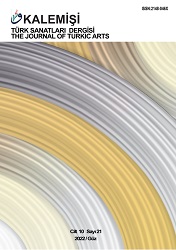İMAM-I BİRGİVİ MEZARLIK ALANI
İMAM-I BİRGİVİ, CEMETERY AREA
Author(s): Ayşe ÇetinoğluSubject(s): Architecture, Visual Arts, Sociology of Culture, Contemporary Islamic Thought, Sociology of Art, Sociology of Religion, History of Art
Published by: Sanat ve Dil Araştırmaları Enstitüsü
Keywords: Architectural restoration; conservation; architectural ornament restoration; tile restoration;
Summary/Abstract: Although there is no definition or rule in the Islamic tradition on this matter, our cemeteries, which have been formed in various ways due to political, religious, social reasons and factors such as the technical conditions of their time periods, are considered as examples of religious structuring. In the planning of our cemeteries, different types of advancement, usage and structuring are observed, due to changes that occur in parallel with urban life. Despite the rapidly changing and positively developing branches of art and science, parallel transformation is not observed in grave structures. Since the historical artifacts that made it to the present day also describe the life styles, traditions and customs of the people of their time periods, they also show us the urban life, plans and structural usage of those time periods. Grave structures produced with traditional forms and materials in the past have now turned into products that are far from being aesthetical or durable. The cemeteries structures, which have been corrupted by the fact that today's life has moved away from aesthetics and gravitated towards semiindustrial products that can be produced cheaply and quickly, is an issue that concerns every segment of the society; however, not much work has been done on it, which can be seen as a separate indicator of how today's sensitivity on this issue has differentiated.
Journal: Kalemişi - Türk Sanatları Dergisi
- Issue Year: 10/2022
- Issue No: 21
- Page Range: 173-177
- Page Count: 5
- Language: Turkish

